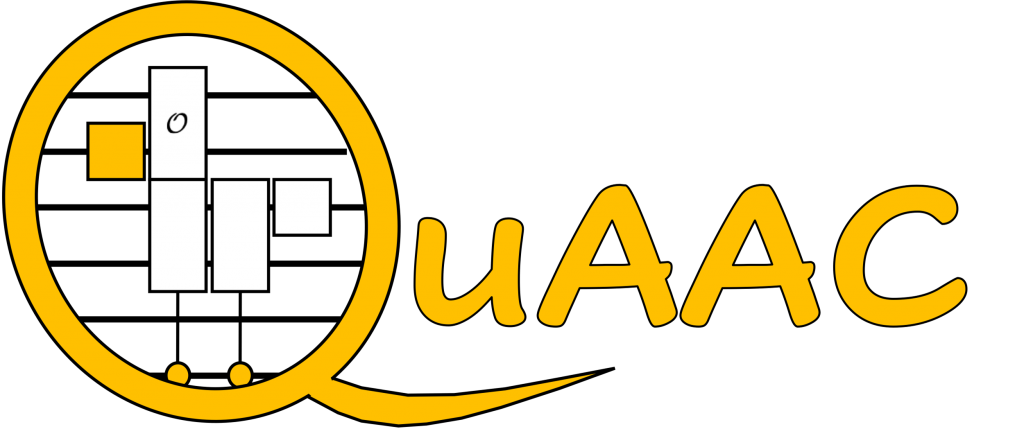The Quantum Algorithms and Applications Collaboratory (QuAAC) is a group of scientists at Sandia National Laboratories working to answer the questions, "what might quantum computers be used for?" and "what kinds of advantages might they offer over conventional classical computers?".
Quantum algorithms are a natural focal point for such questions, and designing, theoretically analyzing, and empirically assessing them is the foundation of our research. But our scope is broader than just quantum algorithms research and includes topics like computing on quantum sensed data, control and modeling of qubit technologies, and quantum-inspired algorithms. QuAAC is comprised of 25+ researchers in physics, computer science, and mathematics at both of Sandia’s main locations (New Mexico and California sites), as well as remote workers and student interns.
Sandia researchers develop new applications of quantum computers through the advancement of quantum algorithms and analysis of their properties. These include algorithms for fault-tolerant scale quantum computers and near-terms devices. Sandia also critically studies quantum algorithms to identify regimes of quantum advantage over the best-known classical algorithms for the same problems.
Quantum computers will enhance scientific computing by helping us answer certain questions better than classical computers. For example, “what is the phase diagram of deuterium?” We know that a sufficiently powerful quantum computer can answer this question more precisely than even the largest and fastest classical supercomputers, but what constitutes “sufficiently powerful”? Answering this question is the aim of quantum resource estimation and it is one of our group’s key capabilities. This involves translating an abstract specification of a quantum algorithm and problem instance into a model of a quantum circuit and subsequently mapping that description onto an architecture that can execute it successfully.
Scientists at Sandia develop techniques and tools for physics-based modeling of qubits and other quantum devices. The models range from first principles all the way up to coarse-grained device physics, stitched together within a multiscale framework. This facilitates understanding how devices operate, the types of errors to which they might be subject, and how those errors can be effectively mitigated or eliminated. These models are used to develop advanced control techniques for quantum computers that are effective and robust.
Sandia develops algorithms for conventional/classical computers that draw inspiration from quantum phenomena to improve performance. This includes algorithms for approximate combinatorial optimization and geometric data analysis.
Featured Project Areas
A multi-institution project focused on developing novel quantum algorithms, bridging the algorithm-application gap, and establishing quantum advantages for fundamental problems in optimization, quantum simulation, and machine learning to further DOE science applications.
A multi-institution project focused on developing and delivering an open-source computing, programming, and simulation environment that support the large diversity of quantum computing research at DOE.
Sandia is one of the three research and development labs for the DOE’s National Nuclear Security Administration. Most of their science and engineering is focused on unique problems related to the safety and surety of the United States’ nuclear weapons stockpile. Cutting-edge computing technologies play an important role in solving those problems, and QuAAC is helping to determine how quantum computers will be uniquely enabling for stockpile stewardship. We are creating and refining (1) quantum algorithms that will enhance physics and engineering modeling, (2) quantum architectures that implement those algorithms, and (3) resource estimates for what it will take to solve specific simulation problems. Another important part of our program is the development of application-driven benchmarks for tracking progress towards fault-tolerant application-scale quantum computers in collaboration with Sandia’s Quantum Performance Laboratory.

